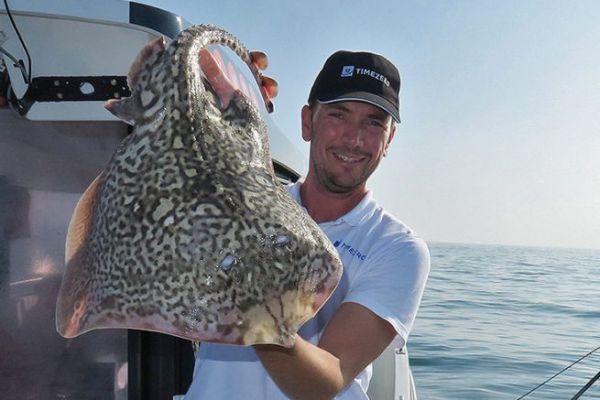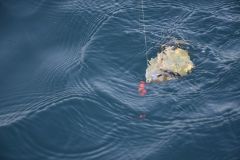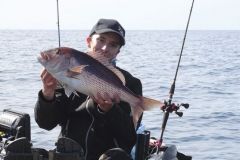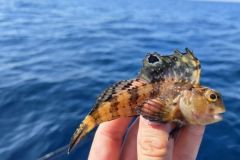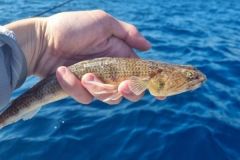Scientific names
Stingrays refer to many species of the super-order Euselachii . Lines of the Rajiformes (Berg, 1940) are known as true stingrays. Nearly 20 species can be found on the French coast, including the curly ray, the brown skate, the starry ray, the grey skate, the smooth skate, the stingray, the marbled torpedo, the flowering skate, the ray, the round skate, the soft skate and the mixed skate.
Morphology
Rays are flatfish with wing-shaped fins (the famous "ray wings" accompanied by capers). Depending on the species, they may be black or beige, with or without spots. Their tails are fairly long.
Fishing spots
Rays live on the seabed, flush with the shell-rich sandy bottom. They also like to live close to rocks, in search of shells. Often resting or buried on sand or other flat bottoms, stingrays breathe by capturing oxygen through the gill slits on their white bellies. They are not averse to a trip to the surface to seize their prey.
Fishing techniques
There are many species of rays of varying sizes. A basic set-up for targeting stingrays from a boat: a slider and a long pole 1 metre long if there's a wave and 1.5 m if the sea is calm. Choose a stiff fluorocarbon line with a diameter of 0.40 mm. A strip of mackerel is attached to a hook size 2/0 to 4/0. You can also use a n° 1 treble hook. From the shore, opt for a two-stack set-up of 40 cm in 0.35 mm, featuring single hooks with long shank in sizes 2 to 1.
Reproduction
They reach sexual maturity at between 50 and 90 cm in length, depending on the species.

Size and weight
- Catch size (legal minimum): none, I recommend 50 cm
- Size at sexual maturity: 50 to 90 cm depending on species
- Average size: 0.80 to 1.30 m depending on species
- Maximum height: 2.50 m (210 kg)
- French record: 37.1 kg (Stingray, Arcachon, Aquitaine, 14/05/2001)
- World record: 201.39 kg (Stingray, Spain, 01/09/1999)
Good to know
The stingray âeuros Dasyatis pastinaca  (Linné, 1758) âeuros is venomous and dangerous. It has a stinger that sends out a (very) painful venom. Be careful not to stick your fingers into it. Given the extraordinary size of the world-record stingray, well beyond scientific knowledge, this could be a confusion with a thorny stingray âeuros Dasyatis centroura  (Mitchill, 1815) âeuros very common on Spanish coasts.

 /
/ 